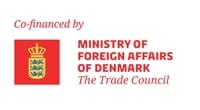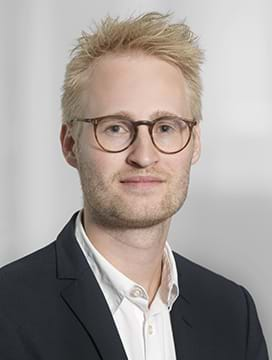The Danish Water Alliance of Latin America
The Confederation of Danish Industry and the Danish Embassies in Latin America have together executed several delegations and projects in the past years within the wide scope of ‘Water’ in the region. Now, we are consolidating the efforts and will be organizing a series of activities on the topic including an exporters’ catalogue, a webinar series and more focused export promotion activities to the region. Join this free-of-charge initiative and get a chance to expand your activities to Latin America.

Latin America and the Caribbean (LAC) can claim its fair share of diversity as a global region – the expanse of Brazil and Argentina, the small island states such as St. Kitts and Nevis, the height extremes of Chile and Peru, and the abundant, per capita, water resources of sparsely populated Guyana. There is diversity between countries and diversity within countries, but against this backdrop headline figures for the region nonetheless highlight the current status and needs as far as water is concerned.
The region faces significant gaps in water supply and sanitation provision. Regionally, sanitation coverage is put at 66 per cent in terms of population connected to a sewerage system. Less than 40 per cent of the wastewater collected is treated. Nonetheless, there are plenty of possibilities for private water companies to invest in new projects, improve the existing ones and undertake operation and maintenance services with qualified professionals.
According to the Development Bank of Latin America (CAF), the estimated investment requirements to meet the water infrastructure demand in Latin America amount to 0.3 per cent of GDP until 2030. To date, that level of investment has not materialized, but if we take into account that the cost of poor water quality represents between 1 and 2 per cent of GDP, the cost-benefit ratio of such an investment effort is very favourable.
Initiative – Exporters’ Catalogue, Webinars and Export Promotion activities:
The Confederation of Danish Industry and the Danish Embassies in Latin America have, in the light of the COVID-19 pandemic, decided on a more strategic approach for targeting Latin America for Danish exporters within the water sector. This will include a series of different activities, many of these organized in collaboration with other Danish stakeholders such as Danish Export, State of Green & CLEAN. We are furthermore in a close dialogue with the Danish financial institutions, EKF and IFU, who will be kept in the loop of our activities.
Due to the worldwide pandemic, travel restrictions and limited possibilities for large gatherings in Latin America we are now consolidating the efforts and will kick the project off by collecting an Exporters’ Catalogue of Danish Water companies with an interest in the region. This can be utilized by the Danish embassies and financial institutions in their approach to potential major foreign buyers of Danish equipment.
Furthermore, we will be organizing a series of webinars on specific challenges and needs for Danish equipment in the region starting on 1 October. This will be used as a stepping stone towards specific and targeted export promotion activities (virtual and/or regular) by the end of 2020 and 2021.
Join our webinars and B2B matchmaking
By joining this initiative, your company will get exposure to major buyers in the region, your company will get updated on specific possibilities and needs in Latin American, and you will furthermore be included in the planning of targeted online/physical export promotion activities during 2020 and 2021. Join, if you have solutions within:
- Wastewater treatment
- Climate adaption
- Water supply
Programme
- Brazil on Thursday 1st October, 2020 (Free of charge)
- Argentina on Wednesday 7th October, 2020
- Peru on Thursday 22nd October, 2020 (Free of charge)
- Mexico - date will follow
Market Information
-
-
In an effort to modernize the Brazilian infrastructure, several projects are unfolding throughout Brazil, including work to provide proper access to water supply and wastewater treatment to the ever-growing urban population, especially in the less well-off areas of the Brazilian cities. In the North East, state governments and municipalities are engaging in the construction of new wastewater treatments and expansion of the wastewater collecting systems. In the state of Rio de Janeiro, it is expected that the privatization of the state-owned water utility, CEDAE, shall unleash the required modernizations for the population. The state of São Paulo is another example of this expansion phase of the water infrastructure in Brazil. In the city of São Paulo, efforts to expand the wastewater collecting systems and cleaning of the Pinheiros and Tietê rivers are already under way, after some legislation changes that allowed SABESP, the state-owned water utility, to hire third parties for the implementation and initial operation phases of infrastructure projects. Consequently, large private companies are conducting the projects and measured by the efficiency of the solution, provided to the population, and the way they drive the projects, they seem to be the most efficient, also in terms of business. The Trade Council in São Paulo has been closely discussing these efforts with the relevant stakeholders and gathered strategic information about the opportunities, not only in the current projects under development but also regarding the forecast trends for the water sector. The webinar about the Brazilian water sector will cover this collected information, in line with what players like SABESP and private companies seek and expect from the cooperation with the Danish initiative.
-
-
-
Argentine water utility company AySA is the largest energy consumer in Buenos Aires and the fourth largest energy consumer at national level. AySA is one of the largest water and wastewater utilities in the world. The company has 21 wastewater treatment plants, and more to come, to cover their area of some 14.5 million inhabitants. One of AySA’s key focus areas is energy optimization, and in cooperation with the Danish Embassy they use the wastewater treatment plant, Planta Norte, as a test case on how to improve all their plants in terms of energy efficiency and energy production. Planta Norte is selected as a test plant for energy optimization in the cooperation between AySA and BIOFOS. This way, the close cooperation between Argentine and Danish water authorities and utilities uniquely positions Danish solutions in AySA’s investments in energy efficiency. With presentations of AySA´s plants, the participants in the webinar will get a thorough insight into their plans for energy optimization, with the aim of building business opportunities for Danish companies focusing on Argentina.
-
-
-
With its 32 million inhabitants, scattered around a vast surface of arid land, mountains and rainforest, Peru is facing challenges in urban and rural sanitary water. 10 per cent of the population, mostly in rural areas, do not have access to clean drinking water, and out of the 90 per cent, who have access to water, 20 per cent consume water with inadequate chlorination levels. In the area of sanitation, only 72 per cent of the country’s population (88 per cent in urban areas and only 16 per cent in rural areas) have access to sanitation facilities. In order to retrieve the situation, the Peruvian government adopted a General Law on Water in 2010 and set up several initiatives to promote access to clean water. The webinar, dedicated to analysing the Peruvian market, will involve the National Programme on Urban Sanitation (PNSR) and the National Programme on Rural Sanitation (PNSU), both under the Ministry of Housing, Construction and Sanitation, as well as OTASS, the technical entity administrating sanitation services throughout the country. Based on presentations by these three institutions, the webinar participants will get a thorough insight into the Peruvian water and sanitation sectors, with the aim of building business opportunities both for newcomers and companies, already present on the market.
-
-
-
Mexico faces several water supply challenges, from insufficient and unequal clean water access and sanitation services to a lack of efficient use of water, affecting its population and productive sectors, in addition to a greater risk of losses because of extreme hydro-meteorological situations, where floods and droughts put the lives of a vulnerable population at risk. In order to achieve a sustainable development of the industry, while guaranteeing access to clean water as a human right to the population, an efficient and responsible use of water must be implemented. This includes a responsible management of water resources in the environment, such as underground water reservoirs, and it includes improving governance to obtain corruption-free decision-making when it comes to water concessions for industries. The Mexican National Water Commission states that 58 per cent of the Mexican population have access to clean water in their homes. Furthermore, monitoring challenges and water leakages affect the destination and efficient use of the resources, putting losses at 60 per cent within the distribution networks (2013). The need for investments and technologies to improve the maintenance and construction of new plants and systems is within the interest of local stakeholders. The major challenges lie in the leakage of water and distribution, water treatment and use of energy in the water plants, which represent a high cost for the municipal water companies.
-

